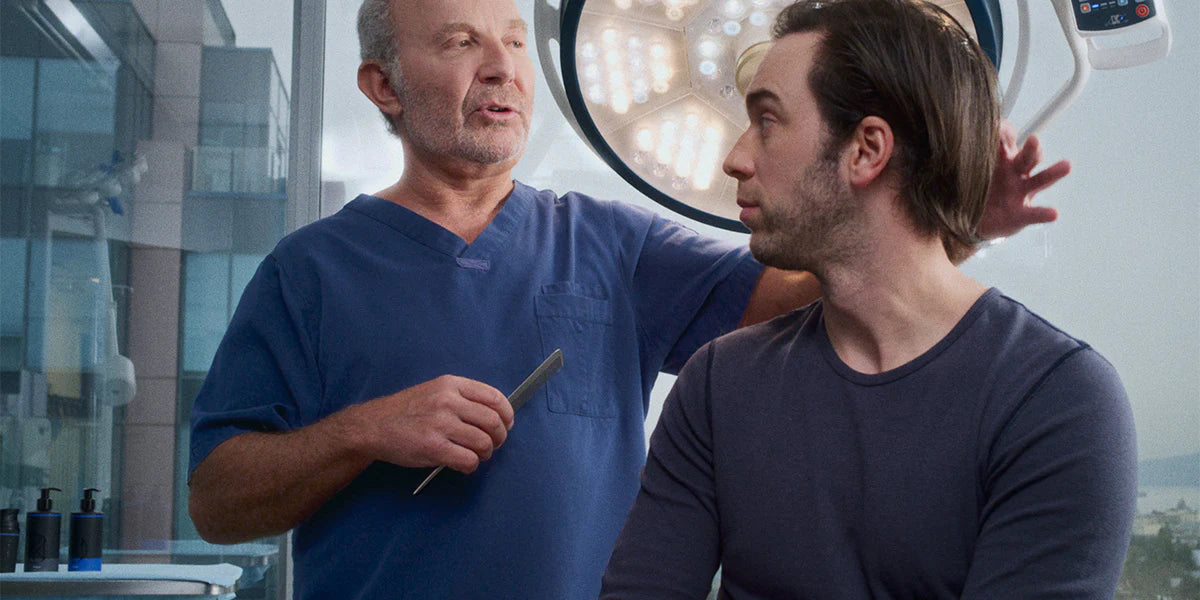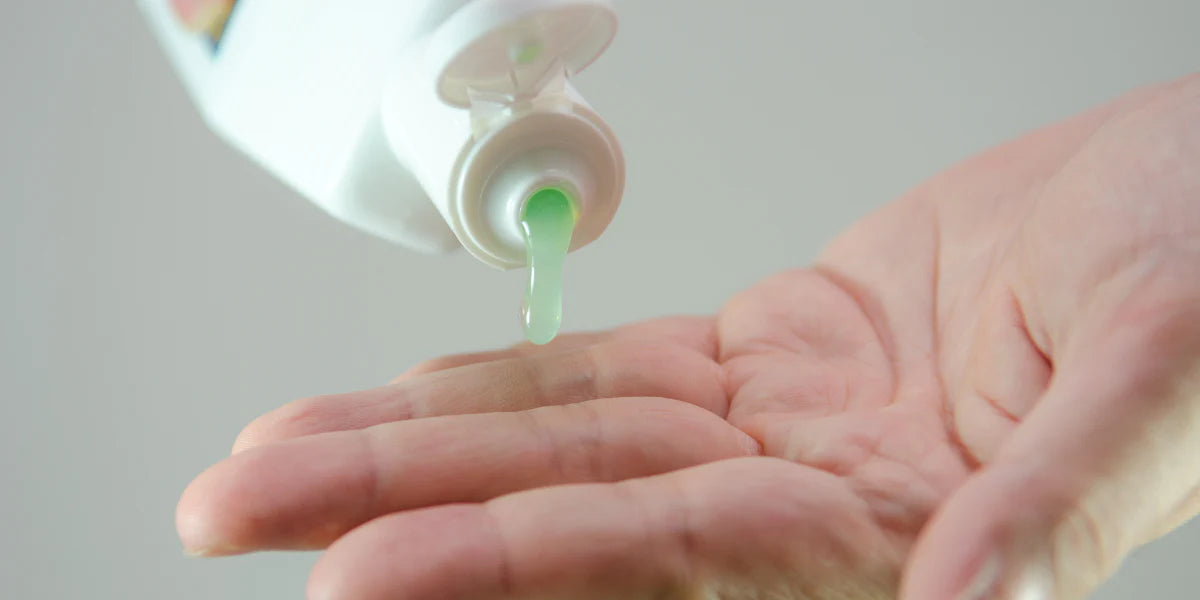Androgenetic hair loss (commonly referred to as pattern hair loss) can start any time after puberty, but it’s usually more common in older men. If hair loss runs in your family there’s a chance you might develop it, but it can be hard to predict exactly when you’ll start to lose your hair. So, when should you start to do something about it? Is there such a thing as treating hair loss too early, or waiting too long to treat it? Let’s take a closer look at these common questions and some general guidance on when to start hair loss treatment.
Am I too young for hair loss treatment?
Premature pattern hair loss (i.e., hair loss before the age of 30) isn’t common but can happen. In men, the two most common places to start thinning are the hairline and the top of the head, or crown. If you suspect you might be experiencing hair loss, we recommend talking to a doctor about it. There are many reasons why a young person might be losing their hair, which can include physical and emotional stress, illness, nutritional deficiencies, medication use or certain medical conditions.
If your doctor determines that you have androgenetic alopecia, they can work with you to review your options. Your treatment plan could involve taking an oral medication or a topical option, or even a combination of different treatments. Younger patients are rarely recommended surgical hair transplants. It’s not necessary during the early stages of hair loss and the results might not stand the test of time (Singh & Archaya, 2021). Having said that, cases of premature hair loss can progress quickly, so it's a good idea to be proactive about treatment.


Balding doesn't have to be inevitable.
Get ahead of hair loss with our hair loss solutions and team of hair loss experts.
Will hair loss treatment be more effective if I start earlier?
The timing of treatments can have an impact on their effectiveness, but it’s only part of the story. How advanced hair loss is and how quickly it’s occurring are also key pieces of information that can affect the results of treatment.
Androgenetic alopecia can start as early as your 20s or 30s, depending on your genetics. A young patient with pattern hair loss that progresses rapidly might not respond as well to treatment compared to an older patient with slower progressing hair loss. Is age a predictor of response to medical treatment? Dr. Jerry Cooley, a hair restoration surgeon based out of North Carolina explains:
So, the answer to this question really depends on two things: how young you are when you start treatment and how bad your hair loss is. The tool used to measure the progress of pattern hair loss in men is the Norwood Scale. Based on available research on the efficacy of treatments like finasteride, patients with a Norwood score of III or less typically respond better to treatment in the long term (Yanagisawa et al., 2019). This is often classified as mild to moderate hair loss.
However, this doesn’t mean that hair loss treatment won’t work for someone with more advanced hair loss. For some patients, just being able to maintain current hair density is a positive result. A 2011 study looking at long term treatment with finasteride found that the medication’s efficacy didn’t change over time and found that participants’ results continued to improve even after the first year of consistent treatment. In fact, within the group of participants that persisted with treatment, only 14% of them continued to have worsening hair loss. The remaining 86% either improved or were able to maintain their hair (Rossi et al., 2011).
Am I too old for hair loss treatment?
Like the question above, age is important when deciding whether and how to treat hair loss, but the severity of thinning is also a factor. In older patients, there’s a chance that follicular miniaturization, or the shrinking of hair follicles that occurs because of DHT, has been going on for a while. Since miniaturization isn’t a fully reversible process, hair follicles may not respond as well to treatment. But this doesn’t mean that pharmaceutical treatments won’t work at all. Remember, older patients with hair loss that progresses slowly could still have good results using drugs like finasteride and dutasteride.
Regardless of whether you’re a younger or older patient with hair loss, it’s a good idea to get an expert’s opinion on the right treatment regimen for you. If you aren’t responding favorably to treatment, a doctor can make treatment adjustments to optimize results. Remember, treating hair loss isn’t a one-size-fits-all process.
How late is too late for hair loss treatment?
Advanced hair loss can be challenging to treat. As mentioned above, follicular miniaturization, or the shrinking of hair follicles, isn’t a fully reversible process. If you’ve had hair loss for a while, your follicles may not respond as well to treatment and hair regrowth may not be as apparent. It may not be possible for large areas of thinning to be filled in with pharmaceutical treatment alone.
However, patients with more significant hair loss may still be candidates for surgical hair restoration like FUE hair transplant surgery, which involves harvesting hair follicles from the denser areas of the scalp and moving these follicles to areas affected by thinning. This approach can help create the appearance of thicker hair that can then be maintained with a treatment like finasteride. This last point is important. It’s a misconception that hair transplant results last forever and even transplanted hair follicles eventually undergo miniaturization. Skilled surgeons can use different aesthetic techniques to help extend the time between repeat procedures, but for the longest lasting results, maintenance therapy (oral or topical treatment) is usually recommended.
Should I be worried if my hairline is receding?
A receding hair line is something that many men experience and are concerned about. It refers to the gradual movement of the hairline further up on the forehead. This usually happens in a symmetrical pattern, starting at the temples. It’s often described as an M-shape. The good news is that in many cases, preventative measures can be taken to slow down frontal balding. This area of hair loss can be trickier to treat than thinning on the top of the head (i.e., the crown) and one of the possible reasons for this is increased sensitivity of hair follicles in this region of the scalp to DHT.
Early signs of a receding hair line can include:
- Thinning at the front of the hairline, temples and/or top of the head, that may be more noticeable during hair styling or hair care.
- Changes in hair texture and/or hair color (hormones like DHT may also affect the shape of the hair follicles and distribution of pigment cells throughout the hair shaft)
If it’s caught early, a receding hair line can be treated like hair loss anywhere else on the scalp, with pharmaceutical interventions like minoxidil or finasteride.
Takeaway: the best time to start hair loss treatment
As we’ve seen, there are several factors that can affect a patient’s response to hair loss treatment that go beyond just age. When you work with a doctor or hair loss specialist to review possible treatment plans, you can trust that they’re also taking into consideration how advanced your hair loss is and how quickly it changes over time. Remember, pattern hair loss is a progressive condition, so it won’t improve unless you’re proactive about treatment. Why take your chances? Connect with a doctor today through XYON to get started on your hair regrowth journey.




